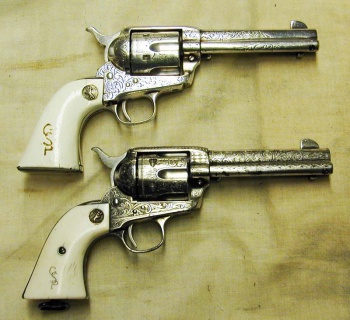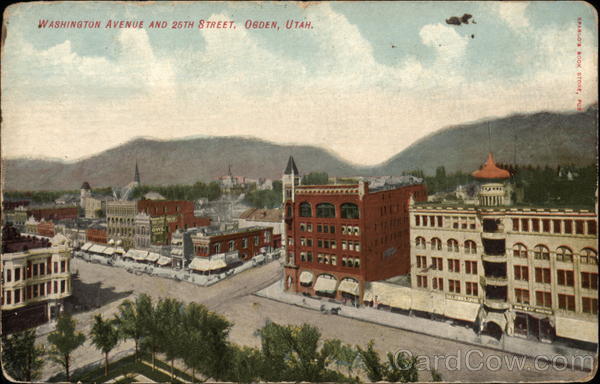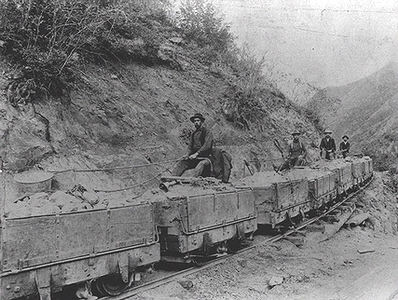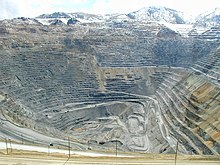The dead man had white hair, a large mustache, and something especially wonderful: two six-shooters hanging prominently on the wall next to the coffin. There were Colt 45s, pearl handled and nickel or silver plated.
 |
| For example, these are General Patton's, one is original, one was made for a movie. |
Later, at the funeral, if young Jack had been listening instead of dreaming of shoot-outs and glory, he might have noticed a few things:
The crowd at the Wilson Ward Chapel would have been large because Grandpa Drake had an enormous family and many friends. (Jack did note in his memoirs that the funeral was huge.) Jack's older cousin Irene was crying because she was missing the best, kindest Grandpa who ever lived. Also, whoever gave the eulogy on Daniel Newell Drake would have had a lot of material because that man in the coffin had left behind a legacy of courage, statesmanship and service, and had witnessed and participated in tremendous growth and change, especially in the state of Utah.
 |
| Irene with her Grandpa Drake |
I don't know much more about the mystery of the stolen pistols, or if it is all just a misunderstanding that got turned into some great family lore, but in any case, we do know what they would have been used for. Daniel Drake was a sheriff.
There has been some confusion over this because Jack was under the impression that his Grandpa Drake was the Weber County Sheriff and also that he served as County Commissioner at one time. Daniel's daughter Pearl also said in an interview that her dad was Weber County Sheriff when she was little. I went to the Weber County Sheriff's department website and was pleased to see that they have a history and roster of their past sheriffs, but dismayed to realize that Grandpa Drake was not on the list. There were some tantalizing gaps in the record, also a request on the site for further information.
 |
| DND before his sheriff days. |
As far as I could tell, Daniel was not pictured, although it was tricky to rule him out since they pretty much all had large mustaches. He would have been friends with those men, but it seemed that they were mostly full-time policemen in uniform, and I knew Grandpa Drake was not.
A digital search of the newspapers around the turn of the century did not yield up Grandpa Drake's name as winning the county sheriff's election or the commissioner's, but his name did pop up for several other things--more on this later.
About this time I received a copy of Daniel's personal history, written in his own hand, from great-grandson Kerry Parker. Surely Daniel would have noted such a position as County Sheriff in his history?
 |
| Ogden Rail yards ca. 1950 |
I don't know that Daniel's pistols ever earned any notches, (although he was involved in at least one all-night shootout down at the Ogden rail yards--the men finally surrendered). He did stay busy. Jack tells that as a little girl Pearl Drake had to take trays of food out to a garage/shed on their property that her Dad used as a temporary lockup when he had to detain someone overnight, or before he had a chance to haul them in to the jail which was 5-6 miles away. I also know that Daniel's guns would have been on fine display during his most notable job: guarding a President of the United States.
 |
| Historic Washington and 25th Street, Ogden, Utah. |
Pearl puts this on record. "President Roosevelt came to make a speech there in Ogden. My father and several deputies guarded him while he went up to make his speech. Mother, I, Ira, and my younger brother Emery came along in the buggy."
Wyoming's historical society has a large amount of information about TR's 1903 tour, including links to transcripts of several speeches (they were pretty much the same). After the speech he got back on the train and was in Evanston by that evening.
 |
| "President Theodore Roosevelt is shown in this photo during a visit to Ogden, Utah, on May 29, 1903. From left to right are shown Secretary of the Navy Benjamin Tracy, President Roosevelt and Utah's Sen. Reed Smoot. Roosevelt defended Smoot to the Senate and the Nation when his seating as a Senator was questioned."--Deseret News, 2013. |
Guarding the President was really only one small way of many that Daniel participated in the history of Utah. Read on.
- Born at Binghams Fort in Feb. 1853, (before the actual fort was built), one of the forts created for protection from the Indians at Brigham Young's pronouncement to "fort up!" in July 1853. Erastus Bingham had been a close associate of Daniel's father D. Newell for years and eventually became Newell's step-father. (For more about Newel's and Erastus's pioneer story, read my post, Ponca Winter Saint.) The original Erastus Bingham cabin, which would have been very similar to Daniel's and in fact, neighbored it, has been relocated and is on display at Lagoon Park. (Binghams Fort has an awesome historical website.) The settlers lived in close contact with the Shoshoni Indians, also called the Weber Utes, and after some conflict and resolution, the white men of the fort (like Newell, Daniel was a baby at this time) were taught the Shoshoni dialect at the schoolhouse. This may have afforded Daniel some skills later in life. Stay tuned!

You can see the original fort properties here belonging to Daniel's father, also named Daniel Newel Drake.
 |
| The fort walls were made of mud and wattle. Painting by Farrell R. Collett. |
- In 1858, when Daniel was five, Brigham Young told the inhabitants of Northern Utah to abandon their forts and settlements rather than fight Johnston's army. A few men were left behind to torch the place if necessary, and the faithful departed. Daniel writes that Newell took his family south to Payson, but they only had to stay about a year before they returned. The family also lived in Provo from 1863 to 1867.
- Daniel was a busy teenager and during those years participated in some major, historically significant projects. He was not your average farm boy. "I worked on the C. P. railroad down in Grouse Creek in the fall of 1868. I worked for the Utah Central Railroad in 1869 and was employed by that company until the end of December when the railroad was completed as far as Farmington, Utah. I went to East Canyon, Tooele Valley in 1871 to work in the mines there and left the same year to go to Bingham [probably the town around the mine, not the fort]" I don't know if his family connection to the Bingham's had anything to do with this. The jump from railroads to mining seems a little strange, but the two are actually connected. Many of the smaller, "local" tracks were built to facilitate the mines.
 |
| Ore Cars, Bingham Canyon 1892. Descended by gravity, hauled back by horsepower. |
 |
| Bingham Mine 2003 --wikipedia |
A biography on Daniel is included in Utah Since Statehood, and it adds more detail to these years, and to how Daniel was an "upbuilder" of Utah, although the tone seems a bit flowery. Here is an excerpt.
Daniel N. Drake of this review was reared to manhood upon the homestead farm and early became familiar with the best methods of tilling the soil and caring for the crops, working in the fields when not busy with the duties of the schoolroom. For three years he was employed in the Bingham mines and then returned to the farm. When fifteen years of age he drove a team and helped on the railroad when the line was being built through Ogden. He had a ride on the first passenger train that entered Salt Lake City. He also in the early days took part in several Indian skirmishes, yet the Drake family were friends of the Indians, always ready to share with them and give them shelter, and therefore they won the friendship of the red men. With all of the experiences of frontier life Mr. Drake is familiar and he has lived to witness a remarkable transformation in Utah as the work of development has been carried steadily forward. Not only has he been identified with farming and other interests but has also engaged in contracting for several years. He is now the owner of excellent ranch property, which is highly developed and improved, and he has for the past four years been field superintendent of the canning factory of the Utah Canning Association. He was also the field superintendent of the Van Allen Canning Company in Box Elder county.Did you catch the part about the "Indian skirmishes"? I am curious about what that might have been, or how serious (or if they really meant Daniel's father), but the statement that the "Drake family were friends of the Indians" rings true, particularly if father Newell might even have known a little of the Shoshoni language. Listen to this story about Daniel as told by his granddaughter Irene Drake Parker.
During my grandpa's earlier years, the area was very rural. Indians lived down by the river (Green Hollows), and that was a bit frightening at times. We loved to hear my grandfather's Indian stories! The Indian path was west of the old Drake home, and they would walk through our land. One night the residents were having a meeting at the church and school building on the sand hill (on the south side of the canal), and the Indians entered the building and would not leave. Someone in charge of the meeting said, "Go get Dan Drake. He knows how to talk to the Indians." Someone went and got Grandpa, and after he talked to the Indians, they left.
Once Daniel became a family man in 1874, he stayed on his farm in Wilson Lane but still participated in several community projects, besides serving as sheriff. I'll let him tell this part because I think it shows the things that he was most proud of.
In 1875 I helped to build the foundation for the first school house in Wilson. I worked hauling lumber down from the mountains to the lumber yards. In 1880 I took charge of the Wilson Canal and worked at that for five years. I was a director of the Wilson Company for two years. Went into the dairy business and was in that business seven years. Then I helped build roads for the county and state for 12 years.He was also:
- Founding member of the Republican Club in Wilson Lane
- Election judge several times in his later years.
- Field superintendant for the Utah Canning Association and Van Allen Canning Company, and would judge crops.
- Ditchrider
(If you missed part one of Two Silver Pistols and a Blacksnake Whip, the link is listed on the left sidebar.)

No comments:
Post a Comment